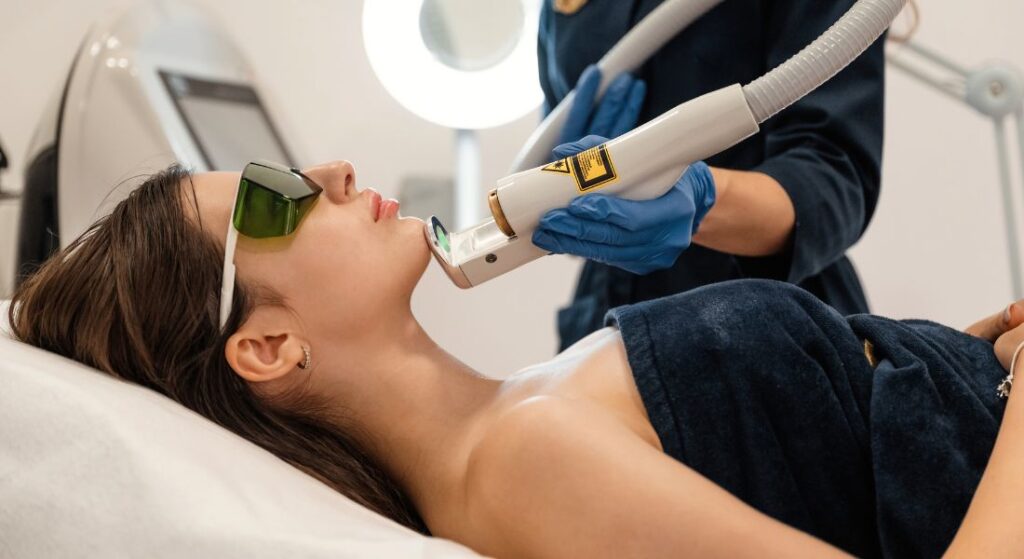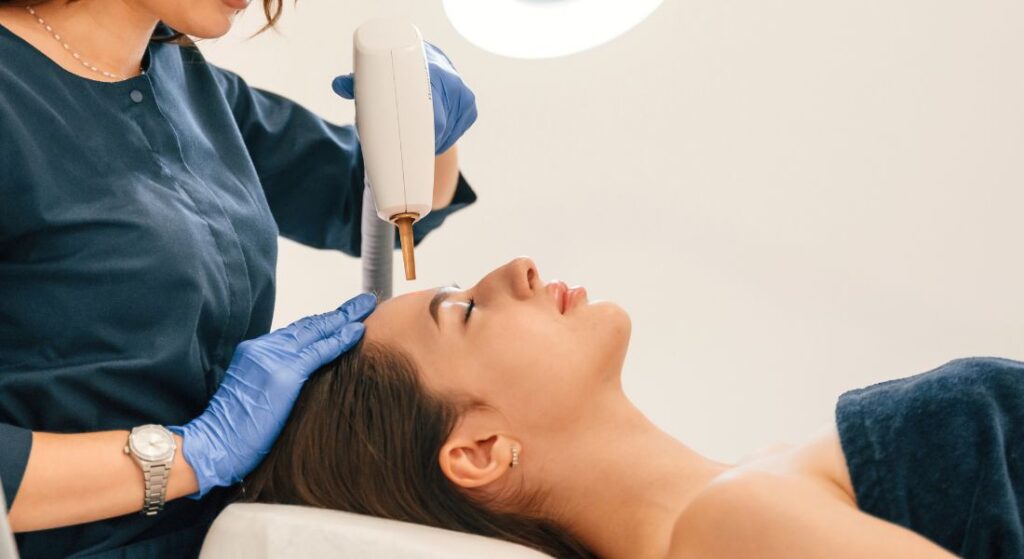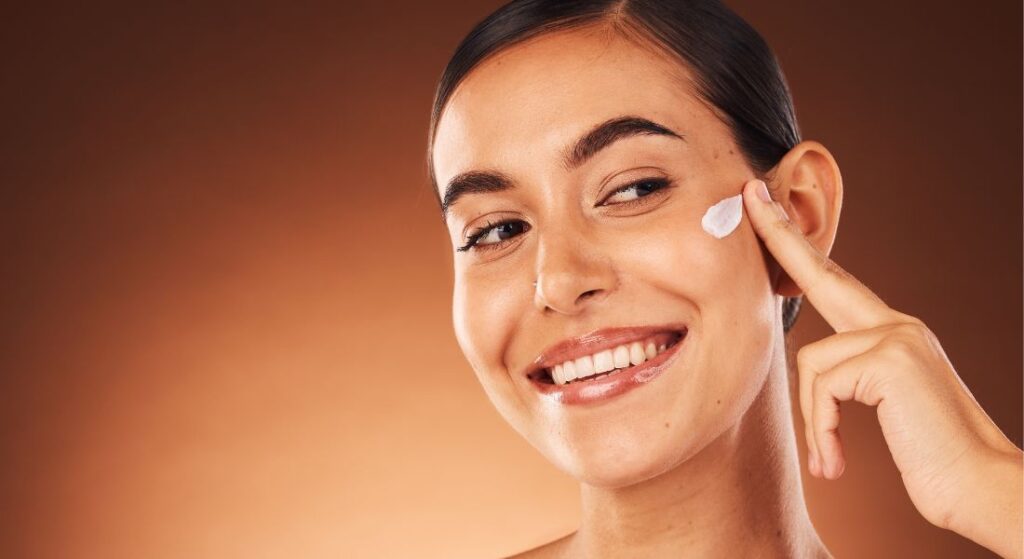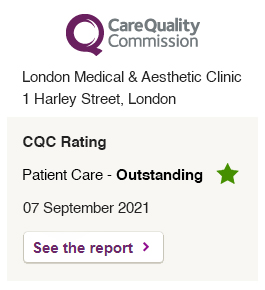
If you have a darker skin tone and you’re researching CO2 laser treatments, you’ve probably already realized something important every article, clinic website, and forum seems to say something different. Some warn that CO2 lasers are too risky for dark skin. Others claim it’s completely safe when performed by the right practitioner. And somewhere in the middle, there are people posting amazing results while others share stories of pigmentation problems that took months to resolve.
It’s confusing, and it’s normal for you to feel cautious. The truth is that CO2 laser is one of the most powerful resurfacing tools in aesthetic dermatology. It can create dramatic improvements for scars, wrinkles, and texture. But when it comes to darker skin tones, the conversation becomes more nuanced. Your melanin-rich skin behaves differently, heals differently, and responds differently to heat and trauma. So it’s essential for you to understand the risks and the safe approaches before making a decision.
In this article, I’m going to walk you through everything you need to know about CO2 laser and darker skin types. I’ll explain how the laser works, why darker skin is more sensitive to certain forms of light energy, what risks you should consider, what benefits are still possible, and whether safer alternatives might be a better option for your skin.
Let’s begin.
Understanding Skin Types and Melanin Levels
To understand the safety of CO2 laser on darker skin, you first need a quick refresher on how skin types are classified.
Dermatologists use the Fitzpatrick Skin Type Scale, which ranges from type I (pale white) to type VI (deeply pigmented). Here’s a simple breakdown:
Type I–II: Light skin, burns easily, minimal melanin
Type III–IV: Olive or medium skin tones, tans more easily
Type V–VI: Brown to dark brown/Black skin, high melanin levels
If you fall into types IV–VI, you’re considered to have a darker skin tone.
Why does this matter for lasers?
Because melanin absorbs light and CO2 lasers create heat.
This combination can increase the risk of:
– post-inflammatory hyperpigmentation (PIH)
– hypopigmentation
– prolonged redness
– uneven healing
So, while CO2 lasers can be used safely on lighter skin types with minimal risk, darker skin requires a more careful, strategic approach.
How CO2 Laser Works

To understand why safety concerns exist, you need to know what the CO2 laser actually does.
A CO2 laser is a fractional ablative laser, meaning it:
1. Removes (ablates) micro-layers of skin tissue
2. Heats the deeper dermis
3. Triggers collagen remodelling
4. Improves scarring, lines, wrinkles, and texture
It is one of the strongest resurfacing lasers in medical aesthetics.
But strength comes with responsibility.
The heat involved in CO2 laser treatments is significant. For lighter skin, this heat usually causes predictable healing. But darker skin with its higher melanin content often goes into “protection mode” when exposed to heat and trauma. This can result in pigmentation concerns that overshadow the potential benefits of the treatment.
This is why the question “Is CO2 laser safe for darker skin types?” requires a carefully considered answer.
So… Is CO2 Laser Safe for Darker Skin? The Honest Answer
Here’s the straightforward truth most clinics won’t say clearly:
CO2 laser can be safe for darker skin types, but only in very specific circumstances and only with an exceptionally skilled practitioner who has extensive experience treating skin of colour.
– It is not the default first-choice treatment for darker skin tones.
– It is not equally safe for everyone.
– It is not a “universal” laser.
Here’s a clearer breakdown:
CO2 laser can be safe when:
– the practitioner is highly experienced with darker skin
– the settings are conservative
– fractional (not full-field) resurfacing is used
– the skin is prepped properly
– the patient is a suitable candidate
– the aftercare is strict
– expectations are realistic
CO2 laser can be risky when:
– high energy or aggressive settings are used
– the practitioner is inexperienced
– your skin hasn’t been preconditioned
– you recently tanned
– you are prone to hyperpigmentation
– you have a history of keloids
– you have darker Fitzpatrick types (V–VI)
This doesn’t mean CO2 laser is “off limits.”
It simply means you need a clinic that truly understands melanin-rich skin because treating darker skin is an advanced skill.
Understanding the Risks for Darker Skin Types
Let’s look at the risks more closely so you can understand exactly why caution is important.
1. Post-Inflammatory Hyperpigmentation (PIH)
This is the most common risk. Your skin may develop dark patches after treatment due to excess melanin activity. PIH can last weeks to months and may require prescription skincare to resolve.
2. Hypopigmentation (Light Patches)
In rare cases, the laser can permanently reduce melanin production in certain areas, leaving lightened patches. These are harder to treat.
3. Prolonged Redness
Darker skin tones may hold onto redness longer because of heightened vascular response.
4. Texture Changes
Aggressive CO2 resurfacing can sometimes cause uneven texture during healing.
5. Keloids or Raised Scars
If you are prone to keloids or hypertrophic scars, the risk increases. This is one of the main contraindications for CO2 laser in darker skin.
6. Delayed Healing
Dark skin sometimes takes longer to recover after trauma.
So, the main takeaway is this:
The risk is not the laser itself it’s using the wrong settings, with the wrong skin preparation, performed by the wrong practitioner.
When CO2 Laser May Be Appropriate for Darker Skin

Now, let’s look at the situations where CO2 laser might be a good option.
1. You have deep acne scars that haven’t responded to other treatments
Sometimes the severity of the scars justifies the controlled risk of CO2 laser if done gently and strategically.
2. You have specific texture issues that milder treatments cannot improve
CO2 laser is unmatched for severe texture irregularities.
3. You are willing to accept downtime and follow strict aftercare
This is essential to reduce the risk of pigmentation issues.
4. You are Fitzpatrick type IV or a lighter type V
These individuals may be safer candidates than very deep skin tones.
5. You’re being treated by a clinician who is genuinely experienced with darker skin
This point cannot be emphasised enough.
Darker Skin Doesn’t Mean “No,” It Just Means “Be Smart”
A lot of people with darker skin assume CO2 laser is completely off limits. But that’s not entirely true.
The real message should be this:
CO2 laser should be used cautiously, conservatively, and only when medically justified not as the first line of treatment. There are safer alternatives that may achieve similar results with far fewer risks. And most people with darker skin start with these before ever considering CO2.
Let’s explore those alternatives now.
Safer Alternatives for Darker Skin Types
You don’t need the strongest laser to get great skin. In fact, darker skin often responds better to more “melanin-friendly” treatments.
Here are alternatives that are widely considered safer than CO2 laser.
1. RF Microneedling (Radiofrequency Microneedling)
This is one of the best treatments for darker skin. It delivers heat under the skin without damaging the surface.
Benefits:
– safe for all skin types
– improves acne scars
– tightens skin
– stimulates collagen
– reduces pore size
– minimal pigmentation risk
For many patients with darker skin, RF microneedling achieves results similar to fractional CO2 over multiple sessions with significantly less risk.
2. Microneedling (Collagen Induction Therapy)
This is a gentler option and can be great for texture, mild scars, and uneven tone.
Benefits:
– safe on all skin tones
– low downtime
– progressive, natural results
– affordable
Microneedling won’t give the same dramatic result as CO2 laser, but it may still be enough depending on your goals.
3. Non-Ablative Fractional Lasers (e.g., 1550 nm, 1927 nm)
These lasers heat the dermis without removing the top layer of skin, making them safer for darker skin.
Benefits:
– less trauma
– lower pigmentation risk
– improves texture and scars
– reduced downtime
They require more sessions, but the safety trade-off is worth it for many people.
4. Chemical Peels (Supervised Only)
Some medium-depth peels can help with pigmentation, scarring, and texture but must be done by someone skilled in treating darker skin.
Benefits:
– cost-effective
– good for pigmentation issues
– can boost overall skin radiance
– customisable depth
They are not ideal for deep acne scars but can be part of a combined plan.
5. Subcision for Rolling Scars
This is a simple but powerful treatment for deeper, tethered scars.
Benefits:
– very safe for darker skin
– fixes the root cause of rolling scars
– can be combined with RF or fillers
Many people mistakenly think they need laser when what they actually need is subcision.
6. TCA CROSS (for Ice Pick Scars)
TCA CROSS can be safe for darker skin when done with low concentrations and by an expert.
Benefits:
– targets deep ice pick scars
– effective when done with caution
– minimal downtime
This technique must be performed with precision to avoid pigmentation issues.
When CO2 Laser Might Be Worth Considering Even If You Have Darker Skin
Now that you understand the risks and alternatives, let’s talk about the situations where CO2 laser could still be a good option.
1. You Have Severe Texture Irregularities
If your scars are too deep or complex for microneedling or RF treatments, CO2 laser may offer the improvement you really want.
2. You Have Tried Multiple Alternatives Without Results
Sometimes the gentler options simply aren’t enough.
3. You Have Fitzpatrick IV or Light V With a Stable Skin Routine
These skin types can sometimes tolerate fractional CO2 with conservative settings.
4. You Have Scarring on Thick Skin Areas (like cheeks or chin)
Thicker skin tends to handle CO2 laser more predictably.
5. You Are Working With a Practitioner Who Specialises in Darker Skin
Not just someone who “can” do it someone who does it often.
How Skilled Practitioners Make CO2 Laser Safer for Darker Skin
A lot of the safety actually depends on your practitioner, not just your skin type.
Here’s what an experienced clinician does differently:
1. Chooses Lower Energy Settings
Gentle, fractional passes reduce heat and trauma.
2. Uses Wider Spacing Between Laser Dots
This prevents heat accumulation and reduces PIH risk.
3. Prepares Your Skin Weeks in Advance
Usually with pigmentation-control agents like:
– azelaic acid
– kojic acid
– tranexamic acid
– retinoids (if appropriate)
4. Avoids Treating You If You’ve Had Recent Sun Exposure
Tanned skin absorbs more heat, increasing complications.
5. May Divide the Treatment Into Multiple Mild Sessions
Instead of doing a single aggressive session.
6. Recommends Pigmentation-Protective Aftercare
To stabilise melanin production during healing.
7. Monitors You Closely Post-Treatment
Especially in the first 7–14 days.
This approach significantly reduces risk but only when performed properly.
Pre-Treatment Checklist for Darker Skin Types
If you are considering CO2 laser, make sure you follow this checklist beforehand:
– Avoid sun exposure for 4–6 weeks
– Stop retinoids or exfoliants if instructed
– Avoid tanning beds
– Treat any active acne first
– Follow a pigmentation-prevention skincare routine
– Disclose all medical conditions
– Understand the downtime
– Choose a practitioner with real experience with darker skin
If your clinic doesn’t screen you thoroughly, that’s a major red flag.
Aftercare: The Most Important Part of Your Safety

Your post-treatment routine can make or break your results.
Here’s what you must do:
– Keep the skin moisturised
– Use prescribed ointments
– Avoid touching or picking
– Avoid heat, sweating, and gym for 1–2 weeks
– Wear SPF religiously
– Avoid sun for weeks to months
– Avoid active skincare until cleared
– Follow every instruction exactly as given
If you follow proper aftercare, you significantly reduce your risks of hyperpigmentation.
Realistic Expectations
If you choose CO2 laser as a person with darker skin, your expectations must match the reality.
You may achieve:
– smoother skin
– improvement in deep scars
– tighter texture
– more stimulated collagen
– long-term improvements
But you must also expect:
– longer downtime
– risks of PIH
– temporary redness
– the need for preconditioning
– slower healing
– possible need for additional treatments
The goal should be improvement, not perfection.
Who Should Avoid CO2 Laser Entirely?
CO2 laser is NOT recommended for darker skin if:
– you are Fitzpatrick VI (most of the time)
– you have a history of keloids
– you scar easily
– you are prone to pigmentation problems
– you cannot avoid sun exposure
– you have recently tanned
– you want zero downtime
– you have unrealistic expectations
In these cases, safer alternatives are usually the better option.
FAQs:
1. Is CO2 laser completely unsafe for darker skin types?
CO2 laser is not entirely unsafe for darker skin, but it does carry a higher level of risk compared to lighter skin tones. The main issue is the way melanin responds to heat. Because CO2 laser generates significant thermal energy, darker skin may react by producing excess pigment, leading to hyperpigmentation or uneven healing. That said, when the treatment is performed by a practitioner who understands skin of colour and uses conservative, carefully controlled settings, it can be done safely in selected cases. So while the procedure is not universally unsafe, it requires far more caution, expertise, and preparation than most other laser treatments.
2. Can CO2 laser cause permanent damage in darker skin?
Permanent damage is not common, but it can happen, especially if the treatment is performed too aggressively or by someone without experience in treating darker skin tones. The most serious long-term complication is hypopigmentation, which appears as lighter patches of skin that may not fully return to their natural colour. Other potential issues include long-lasting texture irregularities or scars caused by improper technique or excessive heat. Skilled practitioners minimise these risks, but even then, darker skin remains more vulnerable to long-term complications than lighter skin.
3. Will I definitely get hyperpigmentation after CO2 laser?
Hyperpigmentation is the most frequently reported side effect among people with darker skin, but it is not guaranteed. Some individuals heal without any pigmentation issues at all. The likelihood depends on the settings used, the level of pre-treatment skin preparation, your natural melanin activity, and how well you follow your aftercare routine. Even when everything is done correctly, your skin may still produce excess pigment as part of its natural healing response. In most cases, this pigmentation is temporary and can be managed with topical treatments, but it is still an important consideration before undergoing the procedure.
4. Does CO2 laser work better for deep acne scars than other treatments?
Yes, CO2 laser is one of the most effective treatments available for deep acne scars because it removes microscopic layers of damaged skin while stimulating strong collagen remodelling beneath the surface. For individuals with significant scarring, it can achieve results that milder treatments may not be able to match. However, for darker skin types, these benefits come with increased risks. This is why many practitioners recommend trying safer alternatives first, such as RF microneedling or subcision, and reserving CO2 laser for cases where other treatments have not provided enough improvement.
5. How many CO2 laser sessions do darker skin types usually need?
The number of sessions required varies depending on the severity of the concerns being treated, but most people need between one and three sessions. When treating darker skin, practitioners tend to use gentler settings, which means the improvements may be more gradual and may require additional visits. Instead of performing one aggressive session, which increases the risk of pigmentation problems, an experienced practitioner may divide the treatment into multiple mild or moderate sessions to achieve safer, more controlled results.
6. What is the typical downtime for CO2 laser on darker skin?
Downtime after CO2 laser is generally longer for darker skin because the healing process involves both recovery of the treated tissue and stabilisation of melanin activity. Most people experience several days of peeling or crusting as the outer layer of skin regenerates, followed by a period of redness or darkened skin that may last weeks. While lighter skin often returns to its normal colour relatively quickly, darker skin tones may need more time for pigmentation to settle. Full recovery can take several weeks, and in some cases, temporary pigmentation changes may persist for a few months.
7. How long does it take to see results after CO2 laser?
Results are not immediate because most of the improvement comes from collagen production beneath the skin, which takes time to develop. While you may notice an initial change once the skin has healed over the first few weeks, the most significant improvements usually appear after two to three months. Collagen continues to rebuild for several months after the procedure, so the final outcome may not be fully visible until three to six months post-treatment. This gradual process is normal and reflects the deeper regenerative effects of CO2 laser.
8. What should I avoid before undergoing CO2 laser treatment?
Prior to the procedure, it is important to avoid anything that increases skin sensitivity or triggers melanin activity. This includes sun exposure, tanning beds, and recent suntans, all of which raise the risk of complications. You may also need to pause strong skincare products such as retinoids, exfoliants, or acids if advised by your clinician. Any active acne, irritation, or breakouts should be treated first, as damaged or inflamed skin does not respond well to laser treatment. Many practitioners start darker-skinned patients on a pre-treatment routine designed to stabilise pigment production and prepare the skin for safe healing.
9. What are some safer alternatives to CO2 laser for darker skin?
Several treatments are considered safer for darker skin because they generate less heat on the surface and carry a lower risk of pigmentation. RF microneedling is often the top alternative because it delivers controlled energy beneath the skin without disturbing the epidermis, making it effective for acne scars, laxity, and texture. Traditional microneedling is another option for improving texture and mild scarring. Non-ablative fractional lasers can provide resurfacing benefits with less trauma, and subcision is an excellent choice for tethered scars that need to be released from underneath. These alternatives reduce the risk of pigment changes while still offering meaningful improvement.
10. Should someone with Fitzpatrick type V or VI consider CO2 laser?
If you are Fitzpatrick type V, CO2 laser may be considered in select situations, but only with extremely cautious settings and only when performed by a practitioner who regularly treats darker skin. Even then, the procedure remains high-risk. For Fitzpatrick type VI, most dermatology experts advise avoiding CO2 laser altogether because the risk of hyperpigmentation, hypopigmentation, and unpredictable healing is significantly higher. In these cases, safer alternatives usually provide more reliable and satisfying results without exposing the skin to unnecessary complications.
Final Thought: CO₂ Laser for Darker Skin
CO2 laser can deliver impressive results, but when you have a darker skin tone, the decision requires more careful thought than most treatments. Your skin has a stronger protective response to heat and trauma, which means pigmentation changes are more likely if the treatment is not planned and performed with precision. This doesn’t mean CO2 laser is completely off limits for darker skin, but it does mean you need the right practitioner, the right preparation, and the right expectations before going ahead.
For many people with deeper complexions, safer options such as RF microneedling, subcision, non-ablative lasers, or microneedling may offer excellent improvement with far less risk. These treatments are often the first step, and CO2 laser is usually considered only when those alternatives are not providing enough change or when the scarring is severe.
If you feel unsure, it’s always best to speak with a specialist who frequently works with skin of colour and can guide you on whether CO2 laser is the right path for you or whether a safer treatment might offer similar results. If you’re looking for a CO2 laser clinic in London, you can contact us at the London Medical & Aesthetic Clinic. Our team will help you choose the most suitable and safe approach for your individual skin concerns.
References:
1. Garg, S., Vashisht, K. R., Garg, D., Oberoi, B. & Sharma, G. (2024) “Advancements in Laser Therapies for Dermal Hyperpigmentation in Skin of Color: A Comprehensive Literature Review and Experience of Sequential Laser Treatments in a Cohort of 122 Indian Patients.” Journal of Clinical Medicine, 13(7), 2116. https://www.mdpi.com/2077-0383/13/7/2116
2. Hang, X. & Lim, D. S. (2025) “A Novel Peel to Prevent Post‑Inflammatory Hyperpigmentation After CO2 Resurfacing for Acne Scars.” Journal of Cosmetic Dermatology, 24(8): e70366. https://pmc.ncbi.nlm.nih.gov/articles/PMC12309148/
3. Tan, K. L., Kurniawati, C., Gold, M. H. (2008) “Low Risk of Postinflammatory Hyperpigmentation in Skin Types 4 and 5 After Treatment With Fractional CO2 Laser Device.” Journal of Drugs in Dermatology, 7(8): 774–778. https://pubmed.ncbi.nlm.nih.gov/18720695/
4. Nanni, C. et al. (2002) “Single‑pass CO2 laser skin resurfacing of light and dark skin: extended experience with 52 patients.” Dermatologic Surgery, 28(8): 745–752. https://pubmed.ncbi.nlm.nih.gov/12745598/
5. Khunger, N. & Sarkar, R. (2009) “The prevalence and risk factors of post‑inflammatory hyperpigmentation after fractional resurfacing in Asians.” Journal of Cosmetic and Laser Therapy, 11(1‑2), 53–58. https://pubmed.ncbi.nlm.nih.gov/17518354/





